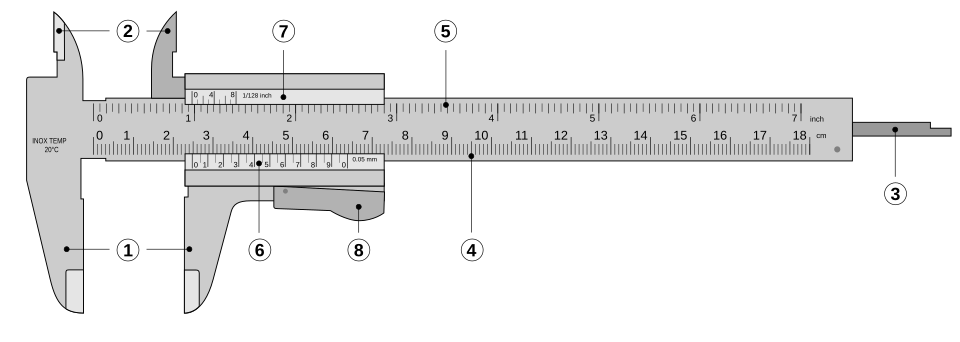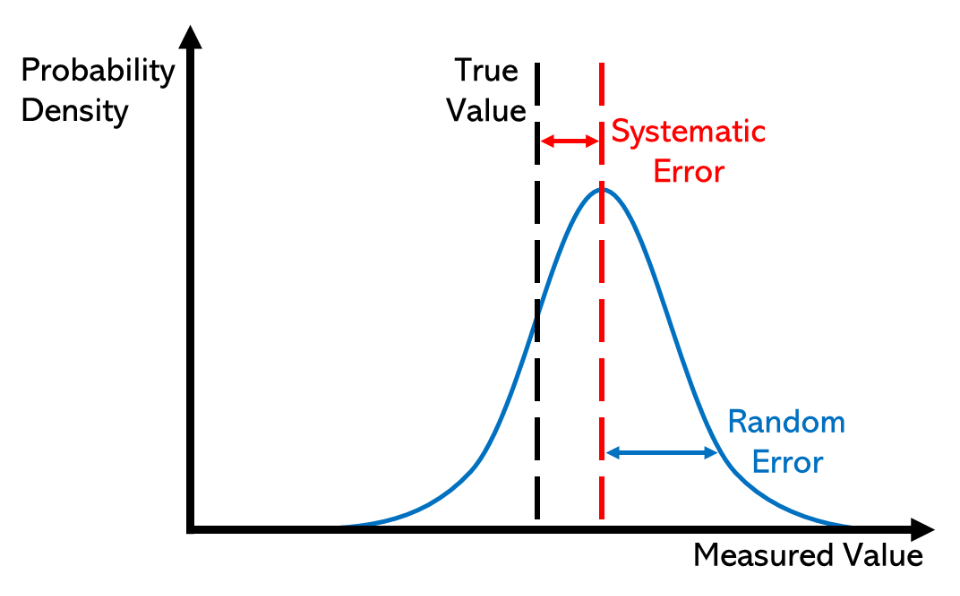OCR Specification focus:
‘Recognise limitations in experimental procedures that could affect validity or reliability, and explain their likely impact on results.’
Understanding Procedural Limitations
Procedural limitations are the inherent weaknesses or constraints within an experimental method that may compromise the validity or reliability of results. Recognising and understanding these limitations allows physicists to assess how trustworthy their data are and how closely they reflect the true behaviour of a system.
A well-designed experiment aims to minimise these limitations, but they are almost always present to some degree due to factors such as the practical setup, measurement tools, or human influence.
Validity and Reliability
Validity concerns whether an experiment measures what it is intended to measure, while reliability refers to the consistency and reproducibility of results when the experiment is repeated.
Validity: The degree to which the results of an experiment accurately represent the physical quantity or relationship being investigated.
Reliability: The extent to which repeated measurements or trials produce consistent results under the same conditions.
An experiment with poor validity or reliability cannot produce trustworthy conclusions, even if it is carried out carefully.
Common Sources of Procedural Limitations
Procedural limitations arise from multiple stages of the experimental process. Recognising them helps in evaluating how they affect the quality of the data.
1. Design Limitations
These occur when the experimental method itself cannot effectively test the hypothesis or relationship in question.
Examples include:
The range of variables chosen is too narrow to demonstrate a meaningful relationship.
The method assumes ideal conditions that are not achievable in practice.
The resolution of apparatus is insufficient to detect subtle changes.
Environmental factors such as temperature or air resistance are ignored in the design.
Such limitations reduce the validity of the experiment because the setup may not truly represent the physical system being studied.
2. Measurement Limitations
These are constraints related to the apparatus or measurement technique used.
Common measurement limitations include:
Instrument resolution — when the smallest measurable change is too coarse to capture the real variation in readings.

A vernier calliper with labelled parts shows how the main scale and vernier combine to achieve fine resolution. Understanding which divisions can be read constrains the precision you can claim. The inch scales are included but are not required by the OCR topic focus. Source.
Systematic errors from miscalibration or zero errors.
Parallax errors due to incorrect eye-level alignment with a scale.
Random fluctuations caused by environmental noise or instability in readings.
Each of these factors can undermine the reliability of the data, leading to inconsistent or biased results.
3. Human and Procedural Errors
Procedural limitations can arise from the way measurements are taken or the sequence of actions during the experiment.
Examples include:
Inconsistent timing techniques, such as starting or stopping a stopwatch with variable reaction times.
Variations in how materials or instruments are handled between trials.
Subjective judgement when reading analogue scales or observing qualitative effects.
While human errors can be reduced by automation or training, they remain an unavoidable aspect of experimental physics.
4. Environmental and External Influences
External factors that cannot be fully controlled during an experiment also act as procedural limitations:
Fluctuations in ambient temperature, humidity, or pressure.
Vibrations or electrical noise interfering with sensitive instruments.
Air currents affecting motion or temperature experiments.
These influences may not always be measurable but can still alter results significantly.
Impact on Experimental Results
The key to recognising procedural limitations lies in understanding their impact on data quality:

Distribution curves illustrate how systematic error shifts measurements away from the true value while random error broadens the spread. The red curve shows biased results; the blue curve shows random variability about the truth. This directly links procedural limitations to accuracy and precision in datasets. Source.
Reduced accuracy: When systematic limitations bias measurements away from the true value.
Lower precision: When random limitations increase the spread of repeated readings.
Invalid conclusions: When the design fails to isolate or control key variables.
Poor reproducibility: When limitations cause inconsistent results between trials or experimenters.
By identifying these effects, students can better evaluate whether their data genuinely support their hypothesis.
Linking Limitations to Uncertainties
Procedural limitations are closely connected to experimental uncertainties, which quantify how confident we can be in a measurement.
Uncertainty: The range within which the true value of a measured quantity is expected to lie, accounting for possible errors and limitations in the procedure.
When reporting results, scientists must consider both the random uncertainty (from unpredictable fluctuations) and systematic uncertainty (from consistent bias). Procedural limitations directly influence both types by affecting how measurements are taken or controlled.
Recognising Limitations in Practice
Students should approach every experiment by critically evaluating the method before and after data collection. Key questions include:
Is the apparatus capable of detecting the necessary range and precision?
Are all control variables clearly identified and monitored?
Could the method introduce systematic bias?
Are repeated trials feasible to improve reliability?
How might environmental or human factors distort the outcome?
Strategies for Identifying Procedural Limitations
To systematically recognise procedural limitations:
Review the method step by step, identifying points where errors could occur.
Compare measured quantities with accepted or theoretical values to detect inconsistencies.
Analyse the scatter and pattern of results — unusual deviations might indicate procedural faults.
Discuss with peers or compare alternative methods to identify hidden constraints.
Examine apparatus specifications, such as resolution, calibration limits, and response times.
Recognising limitations is not about criticising the experiment but demonstrating scientific understanding and critical evaluation.
Reporting Procedural Limitations
In laboratory reports or exams, OCR expects students to:
Clearly state each procedural limitation identified.
Explain its likely impact on validity or reliability (e.g., “May reduce accuracy due to parallax error when reading scale”).
Where possible, link the limitation to data evidence, such as unusual scatter or deviations.
Avoid vague statements like “human error” — specify the exact procedural source.
This level of precision shows analytical depth and understanding of experimental integrity.
The Role of Recognising Limitations in Scientific Practice
The ability to recognise procedural limitations reflects one of the core skills of a physicist: critical evaluation of evidence. In professional research, identifying and acknowledging such limitations is essential for ensuring transparency, reproducibility, and scientific validity. It enables the wider scientific community to understand the confidence level of findings and guides future improvements in experimental design.
FAQ
A procedural limitation is a built-in weakness in the design or method of an experiment — for example, using apparatus with insufficient resolution or a setup that fails to isolate variables.
An experimental error, however, arises during execution, such as misreading a scale or inconsistent timing.
Procedural limitations affect the overall validity or reliability of the experiment even if performed perfectly, while experimental errors are avoidable mistakes that can be minimised with care and repetition.
No, procedural limitations can only be reduced, not completely removed.
Every experiment is a simplified representation of reality. Factors such as apparatus precision, environmental conditions, and human involvement inherently limit data quality.
Scientists reduce their impact by:
Using higher-quality instruments and digital sensors.
Controlling environmental variables where possible.
Applying repeated measurements and statistical averaging.
Recognition of remaining limitations is essential for honest reporting of scientific data.
Procedural limitations often set the lower bound on measurement uncertainty.
For instance, a ruler with 1 mm divisions cannot justify uncertainty smaller than ±0.5 mm.
If procedural limitations introduce uncontrolled variation (e.g., inconsistent release height or delayed timing), these increase random uncertainty, widening the overall uncertainty range.
Systematic limitations, such as miscalibrated equipment, shift all results in the same direction but still influence the confidence in the final value when propagated through calculations.
To show strong evaluation skills:
Identify the specific cause (not just “human error”).
Explain its impact on validity or reliability.
Suggest a realistic improvement — such as using a light gate instead of a stopwatch.
Students should connect each limitation directly to its consequence (e.g., “delayed timing increases the measured period, giving a lower calculated g”). This shows understanding rather than memorisation.
Acknowledging procedural limitations demonstrates scientific transparency.
It allows others to assess whether results are trustworthy and reproducible. If a paper omits known limitations, peer reviewers cannot judge the confidence of the findings.
In professional physics research, detailing limitations helps guide future investigations and method improvements, forming part of the self-correcting nature of science.
This process ensures integrity and maintains public and academic confidence in experimental results.
Practice Questions
Question 1 (2 marks)
A student uses a stopwatch to time the period of a pendulum. After repeating the measurement several times, the results vary slightly.
(a) Identify one procedural limitation in this experiment and explain how it affects the reliability of the data.
Mark scheme:
Identification of limitation (1 mark):
Example answers: human reaction time, inconsistent starting point, or parallax when reading the scale.
Explanation of effect (1 mark):
Example answer: human reaction time introduces random variation between trials, reducing the reliability of the measured period.
Question 2 (5 marks)
A student designs an experiment to determine the acceleration due to gravity, g, by dropping a steel ball from a known height and timing its fall using a stopwatch.
Discuss the procedural limitations of this method and explain how they could affect the validity and reliability of the results.
Mark scheme:
Identifies at least two valid procedural limitations (2 marks total):
e.g., human reaction time when starting/stopping the stopwatch, uncertainty in measuring height, air resistance affecting motion, or misalignment of the ruler/scale.
Explains how each limitation affects the validity of the result (1–2 marks):
e.g., air resistance means the motion is not purely under gravity, so the calculated value of g is lower than the true value (reduces validity).
Explains how each limitation affects the reliability of the result (1–2 marks):
e.g., variation in reaction time between trials leads to inconsistent measurements of fall time (reduces reliability).
Maximum 5 marks available.
1–2 marks: identifies limitations with minimal explanation.
3–4 marks: identifies and explains effects on validity or reliability.
5 marks: clear and detailed discussion of multiple limitations with well-linked reasoning.

